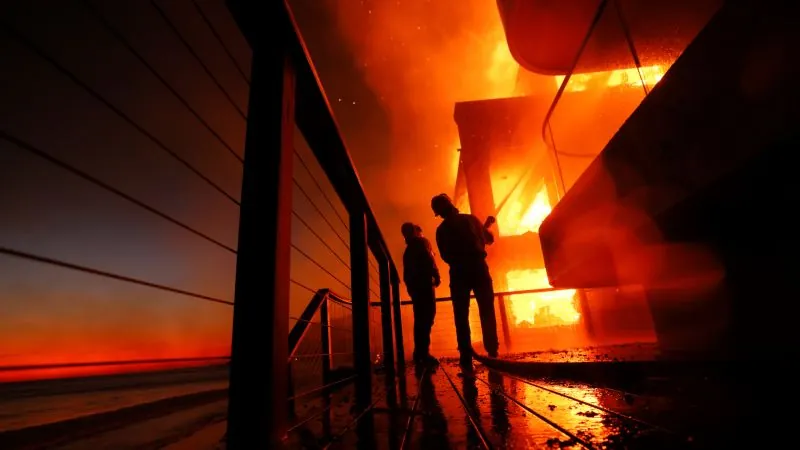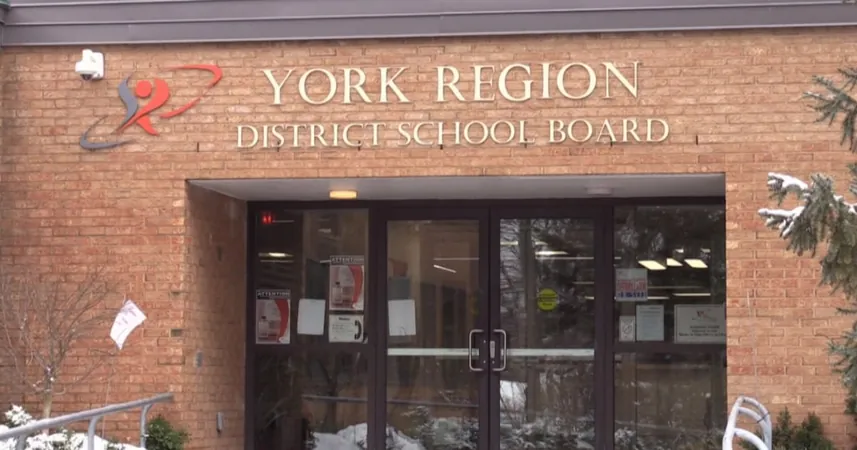
Climate Change Fuels Intensity of LA Wildfires: Shocking Findings Unveiled!
2025-01-15
Author: Sophie
Wildfires and Climate Change
Recent wildfires that have devastated Los Angeles are being linked to climate change, revealing that they were not only larger but burned hotter than they would have in a pre-industrial world. A groundbreaking analysis from the University of California, Los Angeles (UCLA) asserts that climate-induced factors accounted for approximately 25% of the fuel that ignited these fierce flames.
While the researchers acknowledge that such fires would have occurred without human-induced pollution, the implications are clear: they would have been notably smaller and less destructive. This critique raises significant concerns about fire management strategies, seeking to understand whether these catastrophic events could have been contained had it not been for the escalating effects of climate change.
Scale of the Wildfires
Since January 7, the Los Angeles area has been engulfed by twelve separate wildfires that have consumed over 60 square miles and destroyed more than 12,000 structures, including homes and businesses. The Eaton and Palisades fires have made history, now holding positions as the first and second most destructive fires Southern California has ever witnessed.
Contributing Factors
Contributing factors from the climate crisis include a series of excessively wet winters that have created a "green" environment, now doused in dryness due to extreme summer heat and an unusually delayed rainy season. Researchers noted that downtown Los Angeles saw record rainfall over the past two winters, creating lush growth of grasses and shrubs, which later dried out due to an unforgiving dry spell.
The term "weather whiplash" aptly describes the extreme fluctuations between wet and dry conditions that are becoming increasingly frequent due to global warming. Southern California recorded an alarming low of only 0.29 inches of rain from May 2024 to January 8, marking one of the driest periods on record and exacerbating wildfire risks. The moisture content in the dead vegetation reached its sixth-lowest level in the same time frame.
The Role of Santa Ana Winds
Interestingly, the recent fires were also intensified by an unexpectedly strong Santa Ana wind event, which added to the uncontrollable conditions. However, scientists warn that while climate change is influencing numerous weather patterns, there's currently no explanation linking the phenomenon directly to stronger Santa Ana winds.
Urgent Need for Action
With wildfires raging more frequently and ferociously as our planet warms, researchers are emphasizing the urgent need for "aggressive suppression" measures and community education to create fire-resistant urban designs. January typically brings significant rainfall to Southern California, yet forecasts suggest we may face an unusually dry month ahead, further heightening concerns about upcoming fire seasons.
As the battle against climate change rages on, this stark analysis serves as a dire reminder of the urgent actions we must take to combat the factors fuelling these devastating wildfires. Will we change our ways before it’s too late?









 Brasil (PT)
Brasil (PT)
 Canada (EN)
Canada (EN)
 Chile (ES)
Chile (ES)
 Česko (CS)
Česko (CS)
 대한민국 (KO)
대한민국 (KO)
 España (ES)
España (ES)
 France (FR)
France (FR)
 Hong Kong (EN)
Hong Kong (EN)
 Italia (IT)
Italia (IT)
 日本 (JA)
日本 (JA)
 Magyarország (HU)
Magyarország (HU)
 Norge (NO)
Norge (NO)
 Polska (PL)
Polska (PL)
 Schweiz (DE)
Schweiz (DE)
 Singapore (EN)
Singapore (EN)
 Sverige (SV)
Sverige (SV)
 Suomi (FI)
Suomi (FI)
 Türkiye (TR)
Türkiye (TR)
 الإمارات العربية المتحدة (AR)
الإمارات العربية المتحدة (AR)